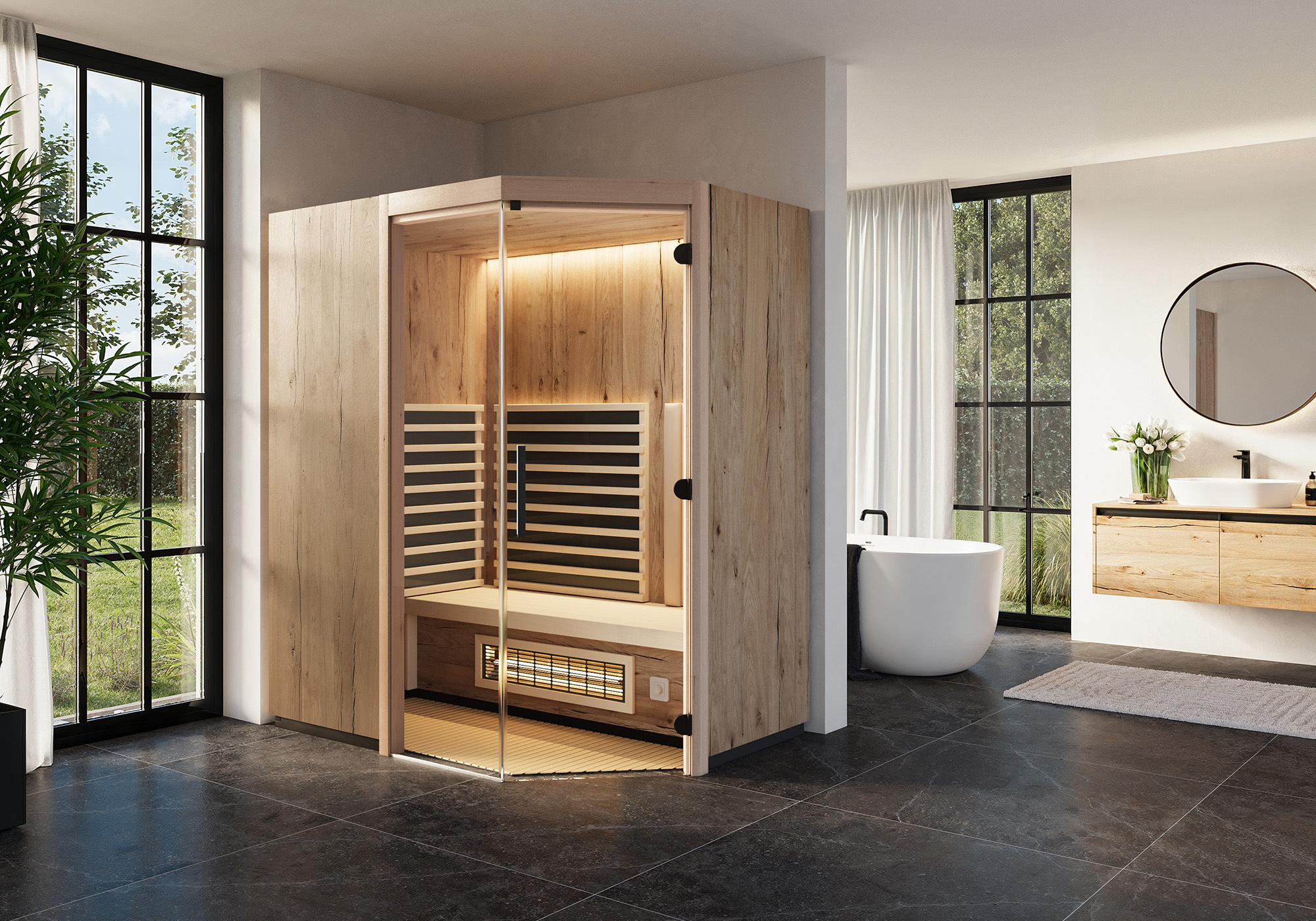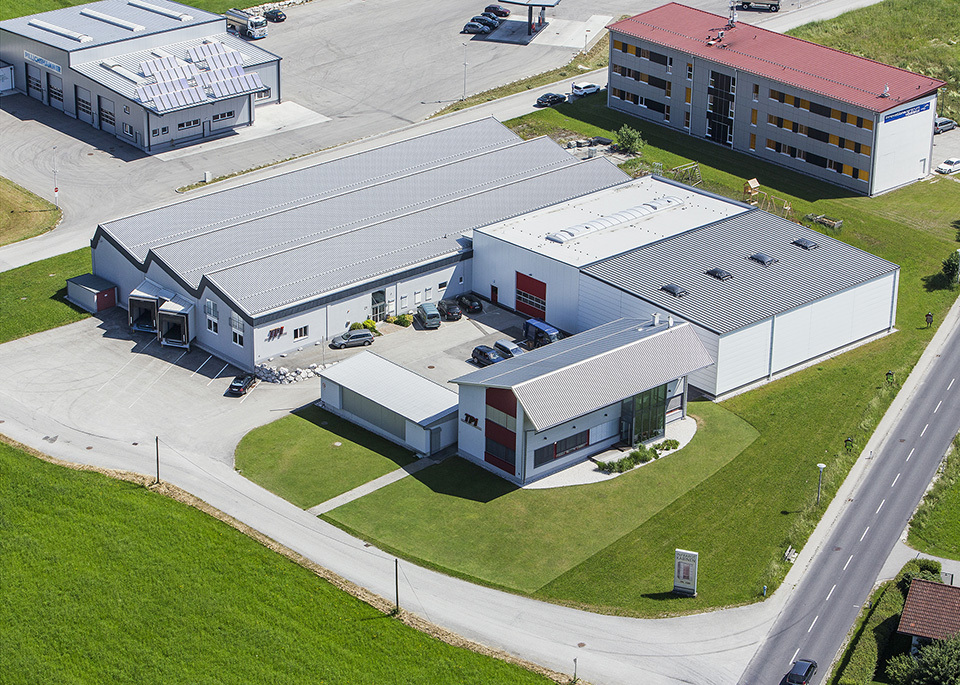Frequently asked questions
about saunas
For a sauna you will need sufficient air supply and ventilation (e.g. via a window) and a current supply of 400 V (high-voltage current) at the place of installation. Saunas are available in different forms and sizes, classical saunas in wood or saunas with glass fronts for a special ambiance. You should also think about the type of wood and the equipment when it comes to the planning. Today, many saunas already come with built-in infrared elements which make the cabin multifunctional.
The major issues when planning an outdoor sauna are the building permit, snow load, concrete foundation, size of the foundation, floor insulation and electric installation.
- Finnish sauna – The Finnish sauna provides particularly high temperatures of 80 - 90°C for an intensive sauna experience.
- BI-O sauna – The BI-O sauna with a sauna heater with evaporator generates a humid sauna atmosphere
(temperatures of about 50°C) with a humidity of approx. 60%. Additionally, you can enrich the air in the cabin with salt and valuable minerals in the BI-O mode with our brine spa (Sole-Therme) salt evaporator. - Sauna with infrared technology – Sauna and infrared combined in one cabin.
- Multifunctional sauna – all technologies combined in one cabin for little moments of well-being.
The size of your sauna depends on various factors, in particular your height and whether you prefer to sit or lie in the sauna. For seated sauna users, a small alcove can often be sufficient, while an internal dimension of around 200 cm is recommended for a comfortable reclining position. To calculate the actual space required, the wall thickness of the sauna and the distance from the wall must be taken into account in addition to the interior dimensions if the sauna is adjacent to a wall.
For rough planning purposes, we recommend dimensioning at least one side of the sauna with an internal dimension of 200 cm to ensure comfortable use. Of course, the sauna can also be planned smaller, depending on personal preference or room size. Alternatively, a larger sauna is a good option if there is sufficient space and the sauna is for family use.
When planning the external dimensions, it is important to add the wall thickness of the sauna to the internal dimensions. For element saunas, this is 7.5 cm (4.5 cm for log saunas). In addition, 5 cm air inlet and 10 cm air outlet wall clearance should be planned for Finnish saunas to ensure adequate ventilation. For Bi-O saunas, 6.5 cm supply air and 10 cm exhaust air wall clearance is required. This rear ventilation is crucial to prevent condensation and possible mould growth.
As an example: An element sauna with an internal dimension of 200 cm, which adjoins room walls on both sides, would have an external dimension of around 215 cm. The total space required, including wall spacing, would then be around 230 cm.
This example illustrates the difference between internal and external dimensions and shows how important precise planning is for a functional and safe sauna.
- Place of installation: The room should be dry, odourless and heated. The comfortable feeling increases with the installation environment. Experience shows that the easier you access the cabin and the more agreeable you design the ambiance, the more often you will use the cabin.
Floor space: Tiled or vinyl floor. - Power supply: A current supply of 400 V is required, for additional accessories (e.g. coloured LED lighting) a supplementary 230 V connection is needed.
- Duration of assembly: About 6 - 12 hours according to size and build.
Saunas from series production always include a detailed description. With some manual skills it is possible to assemble the sauna on your own. However, a made-to-measure sauna should be installed by an expert. Usually there is no detailed description due to the different constructions and dimensions.
The electrical connection must be carried out by an authorized expert only.
The heater capacity depends on the volume, glass surface (size of the windows) and the sauna construction. Find more information about “Determination of the heater capacity” here:
Unfortunately, there are many incorrect calculations about the power consumption of a sauna circulating on the Internet. The kW output of the sauna heater is often simply multiplied by the operating time to determine the power consumption. However, this calculation is inaccurate. As soon as the sauna heater has reached the desired temperature, it only needs less than 50 % of its maximum output to maintain the temperature.
The actual power consumption of a sauna depends on several factors. The most important influencing factors are
- Size of the sauna cabin
- kW output of the sauna heater
- Individually set target temperature
- Running time of the sauna heater
With a heating-up time of 45 min. and three sauna sessions with a sauna heater of 9 kW, the approximate energy costs are €6.00.
We are at your service.
you need us
Saunas by Infraworld are exclusively available in the specialist shops of our selected partners. Simply send us your request via the contact form which is opened by clicking on the link below. We will forward it immediately to the retailer in your region. They will get in touch with you reliably as soon as possible.




